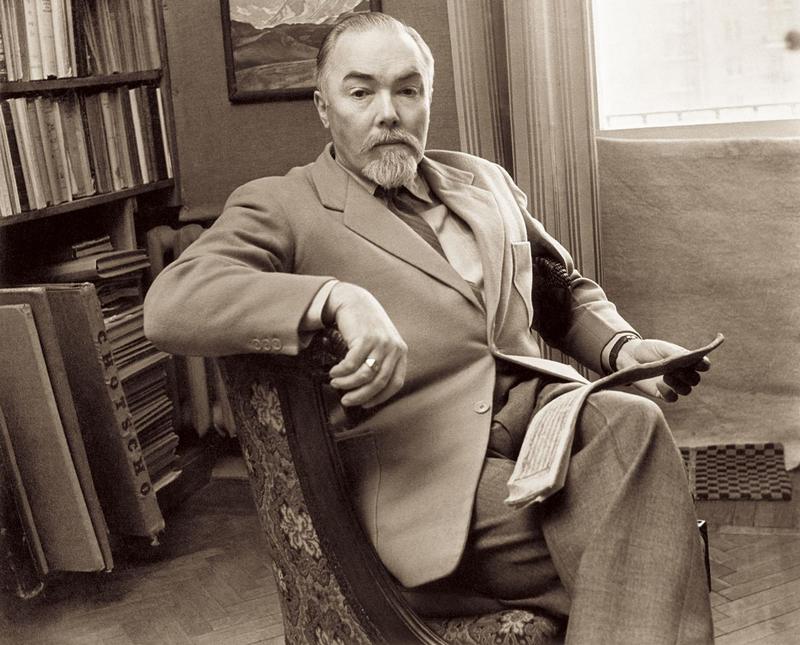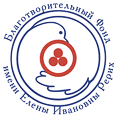International Scientific and Public Conference «120-th anniversary of George Roerich»

|
International Scientific and Public Conference
«120-th anniversary of George Roerich»
Moscow, October 9–10, 2022
Organizer of the conference:
International Centre of the Roerichs
Coorganizers:
Kyrgyz-Russian Slavic University
Russian Academy of Natural Sciences
Russian cosmism group of Russian philosophical society
Soviet foundation of Peace
International Committee for preservation of the Roerichs’ heritage
Charitable Foundation by name of Helena Roerich
International council of Roerich organizations named after Svetoslav Roerich
George Roerich is one of the greatest orientalists of the 20th century, the founder of the Russian school of Tibetan studies and Mongolian studies, linguist, art historian, ethnographer, traveler, he has numerous works on dialectology of the Tibetan language.
In 1947 Nicholas Roerich wrote about his son: «How we need George – an indologist, a sanskrit scholar, a tibetologist and a mongolist who not only knows the sources deeply, but also speaks languages – a spectacular synthesis, so necessary with the increased importance of Asia». As a member of a great family George Roerich conducted scientific research relying on the cosmic worldview of the Living Ethics. This approach reflected in his works «The Animal Style Among the Nomad Tribes of Northern Tibet», «Tibetan Painting», «The History of Middle Asia» and many others.
George Roerich's life and creative path presents us a great scientist who created a new spiritualized science united the wisdom of the East and the empirical achievements of the West. Like his outstanding parents he had synthetic mentality, which made it possible to apply a new methodology in scientific research. George Roerich was a pioneer in science. Studying the animal style in the ancient art of Asia, he discovered that this form of artistic creativity is universal, because the animal style was inherent in the cultures of many regions of the world – from Central Asia to Scandinavia. This approach allowed him not only to find the peculiarities of different cultures, to identify their common features, but also to see the place of each culture in the human evolution. George`s broad approach to the study of culture contributed to developing together with other members of the Roerichs family a conception of culture as a cosmic phenomenon and its leading role in evolution.
George together with Helena Roerich and Nicholas Roerich was actively engaged in scientific research during the Central Asian expedition (1923–1928), organized by Nicholas Roerich, took part in the Manchurian expedition (1934–1935), was a director of the Urusvati Himalayan Research Institute in the Indian Kulu Valley (1928–1940). All members of the Roerichs family made a great contribution to the comprehensive activities of the Institute. Taking an active part in all joint scientific projects, George Roerich laid the foundation for new spiritualized science. George`s creative work, his ideas and discoveries stimulate the Oriental studies development and scientific knowledge in general in the space of modern science.
In 1957 George Roerich returned to the USSR and headed the «Section of Indian Philosophy and History of Religions» in the Institute of Oriental Studies of the USSR Academy of Science. He created a Russian school of Tibetan Studies, developed the Nomadistic studies, prepared for publication a Tibetan-Russian-English dictionary in several volumes with parallels in Sanskrit, achieved the resumption of the famous series «Biblioteca Buddhica», founded by an outstanding Russian orientalist By S.F.Oldenburg in 1897. An important factor in the development of Russian Tibetan and Mongolian studies was the training of young scientists by George Roerich. His students and their followers created a powerful scientific potential in the field of orientalism. The fundamental works, discoveries and philosophical ideas of George Roerich become increasingly important, directing new generations of scientists to study the culture of the peoples of Asia.
Thanks to George Roerich numerous exhibitions of paintings by Nicholas Roerich were organized in the USSR in 1958–1959 in Moscow, Leningrad, Riga, Kiev, Tbilisi, and the first exhibition of paintings by Svetoslav Roerich in 1960 in Moscow.
The Organizing Committee of the conference invites scientists, cultural and public figures to take part in the conference and discuss the following issues:
– George Roerich's life and scientific work;
– George Roerich's scientific, philosophical and artistic heritage;
– aspects of historical and cultural studies of the peoples of Middle and Central Asia in G.Roerich's works;
– The concepts of culture and civilization in G.Roerich's creative work;
– G.Roerich's contribution to the historical and cultural study of the East;
– George Roerich as a true companion of his parents – Nicholas Roerich and Helena Roerich;
– Mainstreaming of the ideas of the Living Ethics in George Roerich's creative heritage;
– Epistolary heritage of George Roerich;
– on the problem of studying George Roerich's heritage in the works of Ludmila Shaposhnikova.
Reports – October 9–10.
Deadline for submitting abstracts – not late than September 10, 2022. (abstracts received by the organizing committee later are out of approval). Volume – not less than 3 000 and nor more than 5 000 symbols with spaces. Font – Times New Roman, size – 14. Page fields – 1,5 sm. Line spacing – 1,5 lines.
The selection of the reports is held on a competitive basis. The organizing Committee will announce the inclusion of the report in the conference program by September 15, 2020.
Time limit – 20 minutes.
Please, send abstracts to Irina Diachenko (idiachenko@yandex.ru) and Alla Klementieva (alla_1998_roma@yandex.ru).
More information you can find on the ICR website.

